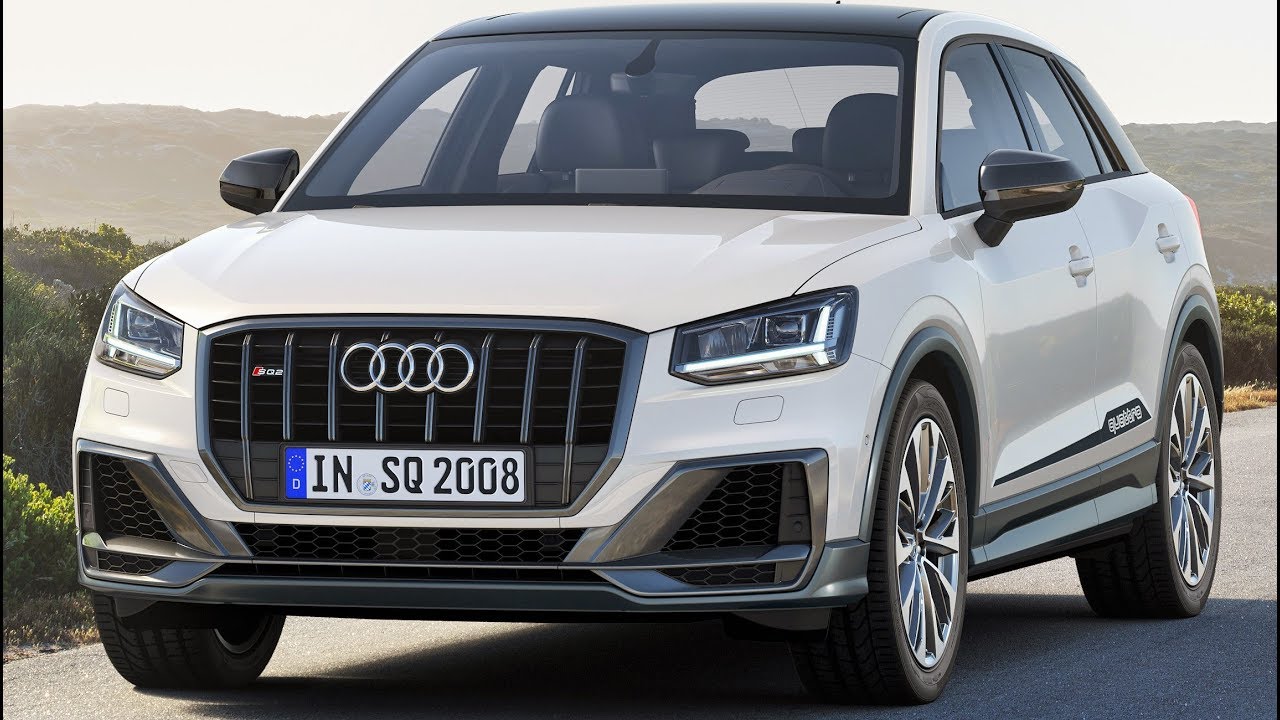2019 Audi SQ2 – Compact Sport Performance SUV. 2019 Audi #SQ2 Quattro – Drive, Interior and Exterior. Subscribe.
2019 #AudiSQ2 Quattro S tronic Technical Specifications:
Engine type: Inline 4-cylinder engine
Displacement in cc / bore x stroke in mm / compression: 1984 / 85.5 x 92.8 / 9.3
Max. power output in kW (hp) / at rpm: 221 (300) / 5300 – 6500
Max. torque in Nm (lb-ft) / at rpm: 400 (295.0) / 2000 – 5200
Top speed in km/h (mph): 250 (155.3)
Acceleration, 0-100 km/h (0-62.1 mph) in sec: 4.8
Combined fuel consumption in l/100km: 7.2 – 7.0
The heart of any Audi S model is the engine, and the 2.0 TFSI in the SQ2 is in peak form. It puts out 221 kW (300 hp) and a constant 400 Nm (295.0 lb-ft) of torque between 2,000 and 5,200 rpm. Developed by Audi engineers and built in Győr, the engine outclasses all its rivals in this segment. The same applies to the sport SUV’s performance: The sprint from 0 to 100 km/h (62.1 mph) takes 4.8 seconds, and top speed is a governed 250 km/h (155.3 mph).
The four-cylinder TFSI in the Audi SQ2 is a high-performance, 1,984 cc engine. It responds instantly up to the redline at 6,500 rpm. In the dynamic mode of the Audi drive select dynamic handling system, it responds even more directly, with brief double-clutching accompanying the gear changes by the S tronic. The engine develops a particularly sonorous sound when driven dynamically. The 2.0 liter TFSI engine weighs only around 150 kilograms (330.7 lb), which benefits not just the total weight of the Audi SQ2, but also the axle load distribution.
Numerous high-tech features hone the profile of the powerful four-cylinder. The intake and exhaust camshafts are adjustable to optimize fill and gas exchange. On the exhaust side, the Audi valvelift system (AVS) adjusts valve lift in two stages based on demand. This reduces flushing losses in the combustion chamber and ensures optimal flow of exhaust gas to the turbocharger, particularly in the low rpm range. The advantages of this are agile engine response and a further increase of torque. Controlled by a fast and precise electric overflow valve, the turbocharger develops its maximum boost of 1.4 bar (relative) very dynamically. This engine management system enhances efficiency and reduces fuel consumption during operation under part load.
Efficiency is also a major focal point with the 2.0 TFSI. Two electric-powered rotary valves consolidated into a module regulate the coolant flows. Another major component of the thermal management system is the exhaust manifold integrated into the cylinder head. It helps the engine to warm up quickly.
A seven-speed S tronic with a high spread of 8.7 between the first and last gears transfers the power of the 2.0 TFSI. The driver can operate the lightning-fast dual-clutch transmission in the automatic modes D or S, or shift themselves. If the Audi drive select dynamic handling system is in “efficiency” mode, the clutch disengages when coasting, allowing the compact sport SUV to freewheel. From a residual speed of 7 km/h (4.3 mph), the engine already switches over to start-stop operation.
The seven-speed S tronic’s two clutches are in an oil bath. A small, mechanically driven gear pump supplies them with oil. At elevated demand, a second, electrically driven pump is activated. This efficient oil supply and the low friction of the individual components result in high efficiency.
As with every Audi S model, quattro all-wheel drive is standard in the SQ2. It combines high traction with fascinating handling. Its central element is a hydraulically actuated multi-plate clutch. It distributes torque continuously between the axles. If the front wheels lose grip, the multi-plate clutch can transfer up to 100 percent of the force to the rear within just a few milliseconds.
The quattro drive’s electronic controller provides for the ultimate in driving enjoyment and safety. During sporty driving, it can direct torque to the rear axle as soon as the driver turns the wheel. Under acceleration, the torque literally pushes the fast SUV into the curve. The quattro management system enables precise turn-in during load reversal, and provides maximum control and reliability when drifting on a low-friction road surface. During fast driving, the quattro drive works closely together with the wheel-selective torque control, which smooths out the handling with tiny braking interventions at the inner wheels under reduced load.
The S sport suspension in the Audi SQ2 harmonizes optimally with the dynamic powertrain. With a sportier setup than the system on which it is based, it lowers the body by 20 millimeters (0.8 in). The power boost of the standard progressive steering has an S-specific characteristic. Its rack is specially geared so that the steering ratio becomes more direct the further the wheel is turned. This reduces the steering angle needed and produces a sporty driving feel. Agility is improved when maneuvering, in urban traffic and in tight bends.









